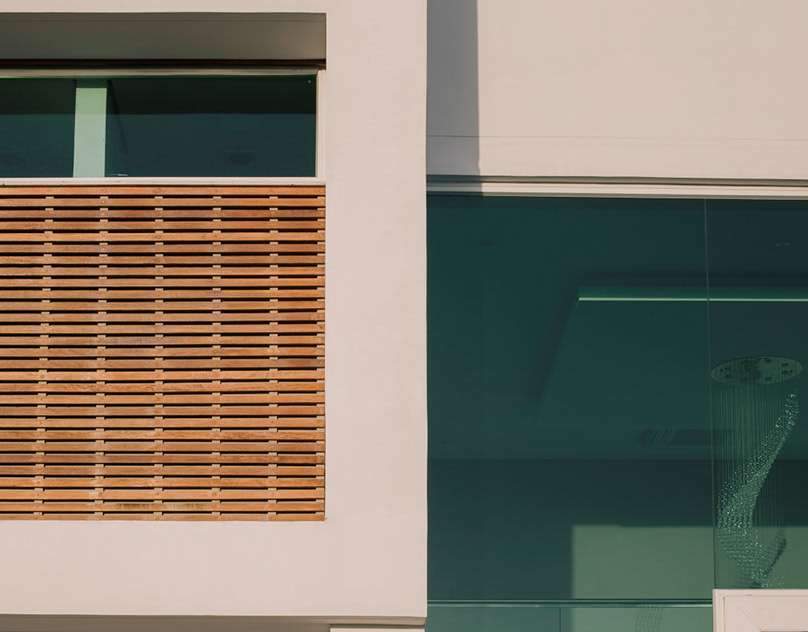In Belgium and Brazil, a trio of retro period pieces that encapsulate their time and place get a modern-day reboot. A Trio of Retro Homes Gets a Modern Reboot
Ten Architects
A couple with two kids decided to become landlubbers after many years of living on a boat. They bought a unique 1978 house on a quiet lot in Brasschaat, Belgium. The property’s original owner was a technical draftsman, and among its numerous selling features were its forested, verdant location and a discussion pit with integrated light switches from the 1970s. It also had other less appetizing period details, like outdated wall-to-wall carpeting in the bathroom, an excess of brown finishes, and too-small windows that gave the area a tiny feeling.
Ten Architects founder Elke van Goel remembers, “We kept the original identity of the house by preserving the conversation pit, the cedar ceiling and concrete floor, the interior doors, and even the toilet-control panel.” She did, however, lighten the space somewhat by painting the walls white, replacing the small windows with larger ones, replacing the rotting awnings with new ones, and generally enhancing the flow from inside to outside and the link to the surrounding vegetation.
The L-shaped pond that encircles the glassed-in living room is a standout feature of the makeover. It gives the homeowners the impression that they are on a boat when they unwind in their sunken conversation pit.

João Batista Vilanova Artigas
A home in São Paolo is a perfect example of the renowned architect’s concrete construction inventions and his endeavors to create a Brazilian modernism that was distinct from European standards. The famous structure, which was created in 1974 for a former pupil, has a symbiotic relationship with its surroundings, complicated interior volumes, unconventional floor ramps, and a Brutalist sense of materiality.
Even while the original family still owns the property privately, in autumn it doubled as a public exhibition for Aberto/02, a cultural event that creates links between art and architecture. Designed by Brazilian-born, London-based art advisor Filipe Assis in association with furniture designer Claudia Moreira Salles and curator Kiki Mazzuchelli, the exhibition featured about 130 artworks spread throughout the audaciously renovated Vilanova Artigas building. Alighiero Boetti, Humberto Campana, Leda Catunda, and Ernesto Neto were among the artists whose paintings, sculptures, and furniture were complemented by the exposed concrete walls, double-height spaces, and stained glass window. For example, in one area, a 2002 oil painting by Adriana Varejão conversed with the freestanding, furniture-like concrete sculptures from 1983 by Ivens Machado.

Fronton Architecture
One of Belgium’s most prominent modernist architects, Louis-Herman De Koninck, had to work hard in 1936 to obtain the building permission issued for this two-story mansion. At the time, the majority of homes in the coastal community of Knokke were thatched or red tile-capped cottages. He was putting out the idea for the so-called “style Pacquebot,” a rather antiquated flat-roofed concept with rounded corners, porthole windows, and sleek roof rails reminiscent of ocean liners. Fortunately, he won out, and the building that was created is now considered a landmark.
The original terrazzo flooring, pastel bath tiles, and glass-block ceiling were still there in the structure, despite decades of modifications, when real estate tycoon Hubert Bonnet bought the protected monument to operate as a vacation and rental home. He commissioned Fronton Architecture, based in Brussels, to renovate it, beginning with the pouring of a new floor slab. Project manager for the company Alain Delogne remembers, “We discovered termite damage, and it turned out the house was built on top of a dune—there was barely any foundation.” Additional interventions included restoring the roof terrace with original tiles, removing paint layers to reveal the original orange window frames, and installing De Koninck’s recognizable Cubex kitchen cabinets, a 1930s design that is still in production.

Finally, find out more on ArchUp:







